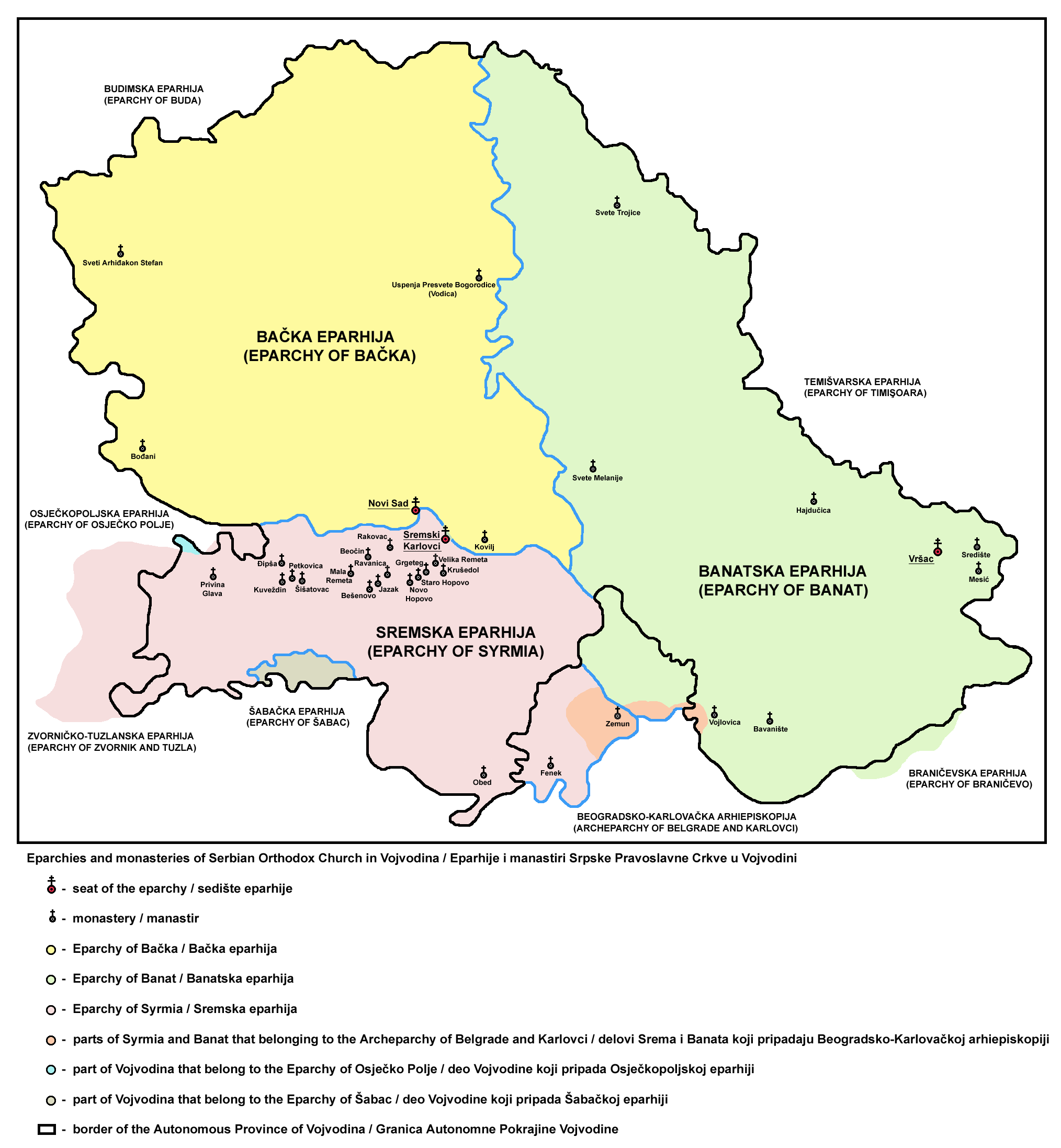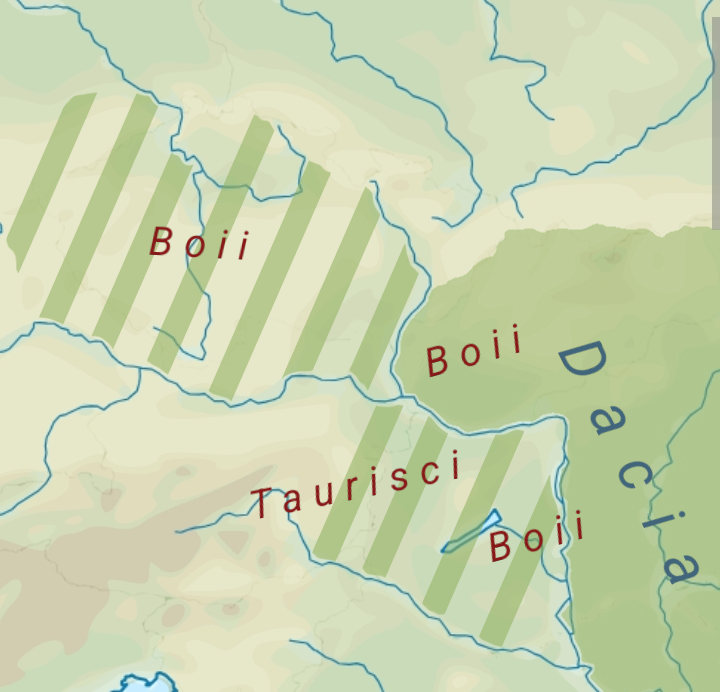|
Syrmia
Syrmia (Ekavian sh-Latn-Cyrl, Srem, Срем, separator=" / " or Ijekavian sh-Latn-Cyrl, Srijem, Сријем, label=none, separator=" / ") is a region of the southern Pannonian Plain, which lies between the Danube and Sava rivers. It is divided between Serbia and Croatia. Most of the region is flat, with the exception of the low Fruška gora mountain stretching along the Danube in its northern part. Etymology The word "Syrmia" is derived from the ancient city of Sirmium (now Sremska Mitrovica). Sirmium was a Celts, Celtic or Illyrians, Illyrian town founded in the third century BC. ''Srem'' ( sr-Cyrl, Срем) and ''Srijem'' ( sr-Cyrl, Сријем, label=none) are used to designate the region in Serbia and Croatia respectively. Other names for the region include: * Latin: ''Syrmia'' or ''Sirmium'' * Hungarian language, Hungarian: ''Szerémség'', ''Szerém'', or ''Szerémország'' * German language, German: ''Syrmien'' * Slovak language, Slovak: ''Sriem'' * Pannonian R ... [...More Info...] [...Related Items...] OR: [Wikipedia] [Google] [Baidu] |
Sremska Mitrovica
Sremska Mitrovica (; sr-Cyrl, Сремска Митровица, ) is a List of cities in Serbia, city in Serbia. It is situated on the left bank of the Sava, Sava river. , the city has a total population of 36,764 inhabitants, while its administrative area has a population of 72,580 inhabitants. As Sirmium, it was a capital of the Roman Empire during the Tetrarchy of 4th century CE. Ten Roman emperors were born in or near this city, Emperors Herennius Etruscus (251), Hostilian (251), Decius, Decius Traian (249–251), Claudius Gothicus (268–270), Quintillus (270), Aurelian (270–275), Marcus Aurelius Probus, Probus (276–282), Maximian (285–310), Constantius II (337–361) and Gratian (367–383). Name The modern town name is ''Sremska Mitrovica'' (). The Hungarian language, Hungarian name was ''Szávaszentdemeter'' while in Croatian language, Croatian it is referred to as ''Srijemska Mitrovica''. In Pannonian Rusyn, it is referred to as . Mitrovica stems from Saint Deme ... [...More Info...] [...Related Items...] OR: [Wikipedia] [Google] [Baidu] |
Fruška Gora
Fruška gora ( sr-Cyrl, Фрушка гора) is a mountain in Syrmia, with most of the mountain being part of Serbia and its westernmost edge extending into eastern Croatia. The Serbian part of the mountain forms the country's oldest National parks of Serbia, national park. Sometimes also referred to as the ''Jewel of Serbia'', due to its largely pristine landscape and protection effort, or the ''Serbian Mount Athos'', being the home of a large number of historical Serbian Orthodox monasteries. Name In Serbian language, Serbian, it is known as ''Fruška gora'' (, Фрушка гора), in Hungarian language, Hungarian as ''Tarcal'' (also ''Almus-hegy'' or ''Árpatarló''), in German language, German as ''Frankenwald'', and in Latin language, Latin as ''Alma Mons''. In Medieval Greek, it was known as ''Frangochoria''. The mountain's name originates in the old Serbian language, Serbian word ''"Fruzi"'' derived from the singular form ''"Frug"''; and its adjective is ''Fruški'', ... [...More Info...] [...Related Items...] OR: [Wikipedia] [Google] [Baidu] |
Sava
The Sava, is a river in Central Europe, Central and Southeast Europe, a right-bank and the longest tributary of the Danube. From its source in Slovenia it flows through Croatia and along its border with Bosnia and Herzegovina, and finally reaches Serbia, feeding into the Danube in its capital, Belgrade. The Sava is long, including the Sava Dolinka headwater rising in Zelenci, Slovenia. It is the largest List of tributaries of the Danube, tributary of the Danube by volume of water, and the second-largest after the Tisza in terms of catchment area () and length. It drains a significant portion of the Dinaric Alps region, through the major tributaries of Drina, Bosna (river), Bosna, Kupa, Una (Sava), Una, Vrbas (river), Vrbas, Lonja, Kolubara, Bosut (river), Bosut and Krka (Sava), Krka. The Sava is one of the longest rivers in Europe and among the longest tributaries of another river. The population in the Sava River basin is estimated at 8,176,000, and is shared by three capit ... [...More Info...] [...Related Items...] OR: [Wikipedia] [Google] [Baidu] |
Pannonian Plain
The Pannonian Basin, with the term Carpathian Basin being sometimes preferred in Hungarian literature, is a large sedimentary basin situated in southeastern Central Europe. After the Treaty of Trianon following World War I, the geomorphological term Pannonian Plain was also used for roughly the same region, referring to the lowlands in the area occupied by the Pannonian Sea during the Pliocene Epoch, however some consider the term "Pannonian Plain" not only unhistorical but also topologically erroneous. Terminology The term Pannonian Plain refers to the lowland parts of the Pannonian Basin as well as those of some adjoining regions like Lower Austria, Moravia, and Silesia (Czech Republic and Poland). The lands adjoining the plain proper are sometimes also called ''peri-Pannonian''. In English language, the terms "Pannonian Basin" and "Carpathian Basin" may sometimes be used synonymously, although the latter holds an irredentist Hungarian connotation. The name "Pannonian" ... [...More Info...] [...Related Items...] OR: [Wikipedia] [Google] [Baidu] |
Vučedol Culture
The Vučedol culture (Croatian: ''Vučedolska kultura'') flourished between 3000 and 2200 BC (the Chalcolithic period of earliest copper-smithing and arsenical bronze-smithing), centered in Syrmia and eastern Slavonia on the right bank of the Danube river, but possibly spreading throughout the Pannonian plain and western Balkans and southward. It was thus contemporary with the Sumer period in Mesopotamia, the Early Dynastic period in Egypt and the earliest settlements of Troy (Troy I and II). Archaeogenetics link the culture from Yamnaya migrations directly from the steppes that mixed with Neolithic people. The need for copper resulted in the expansion of the Vucedol Culture from its homeland of Slavonia into the broader region of central and southeastern Europe. Location Following the Baden culture, another wave of possible Indo-European speakers came to the banks of the Danube. One of the major places they occupied is present-day Vučedol, located six kilometers downstre ... [...More Info...] [...Related Items...] OR: [Wikipedia] [Google] [Baidu] |
Serbia
, image_flag = Flag of Serbia.svg , national_motto = , image_coat = Coat of arms of Serbia.svg , national_anthem = () , image_map = , map_caption = Location of Serbia (green) and the claimed but uncontrolled territory of Kosovo (light green) in Europe (dark grey) , image_map2 = , capital = Belgrade , coordinates = , largest_city = capital , official_languages = Serbian language, Serbian , ethnic_groups = , ethnic_groups_year = 2022 , religion = , religion_year = 2022 , demonym = Serbs, Serbian , government_type = Unitary parliamentary republic , leader_title1 = President of Serbia, President , leader_name1 = Aleksandar Vučić , leader_title2 = Prime Minister of Serbia, Prime Minister , leader_name2 = Đuro Macut , leader_title3 = Pres ... [...More Info...] [...Related Items...] OR: [Wikipedia] [Google] [Baidu] |
Croatia
Croatia, officially the Republic of Croatia, is a country in Central Europe, Central and Southeast Europe, on the coast of the Adriatic Sea. It borders Slovenia to the northwest, Hungary to the northeast, Serbia to the east, Bosnia and Herzegovina and Montenegro to the southeast, and shares a maritime border with Italy to the west. Its capital and largest city, Zagreb, forms one of the country's Administrative divisions of Croatia, primary subdivisions, with Counties of Croatia, twenty counties. Other major urban centers include Split, Croatia, Split, Rijeka and Osijek. The country spans , and has a population of nearly 3.9 million. The Croats arrived in modern-day Croatia, then part of Illyria, Roman Illyria, in the late 6th century. By the 7th century, they had organized the territory into Duchy of Croatia, two duchies. Croatia was first internationally recognized as independent on 7 June 879 during the reign of Duke Branimir of Croatia, Branimir. Tomislav of Croatia, Tomis ... [...More Info...] [...Related Items...] OR: [Wikipedia] [Google] [Baidu] |
Pannonia
Pannonia (, ) was a Roman province, province of the Roman Empire bounded on the north and east by the Danube, on the west by Noricum and upper Roman Italy, Italy, and on the southward by Dalmatia (Roman province), Dalmatia and upper Moesia. It included the modern regions western Hungary, western Slovakia, eastern Austria, northern Croatia, north-western Serbia, northern Slovenia, and northern Bosnia and Herzegovina. Background In the Early Iron Age, Transdanubia was inhabited by the Pannonians or Pannonii, a collection of Illyrians, Illyrian tribes. The Celts invaded in the Late Iron Age and Gallo-Roman culture, Gallo-Roman historian Pompeius Trogus writes that the Celts were met with heavy resistance from the locals and were not able to overrun the southern part of Transdanubia. Some tribes advanced as far as Delphi, with the Scordisci settling in Syrmia (279 BC) upon being forced to withdraw. The arrival of the Celts in Transdanubia disrupted the flow of amber from the Balti ... [...More Info...] [...Related Items...] OR: [Wikipedia] [Google] [Baidu] |
Ekavian
Shtokavian or Štokavian (; sh-Latn, štokavski / sh-Cyrl, italics=no, штокавски, ) is the prestige supradialect of the pluricentric Serbo-Croatian language and the basis of its Serbian, Croatian, Bosnian and Montenegrin standards. It is a part of the South Slavic dialect continuum. Its name comes from the form for the interrogative pronoun for "what" . This is in contrast to Kajkavian and Chakavian ( and also meaning "what"). Shtokavian is spoken in Serbia, Montenegro, Bosnia and Herzegovina, much of Croatia, and the southern part of Austria's Burgenland. The primary subdivisions of Shtokavian are based on three principles: one is different accents whether the subdialect is Old-Shtokavian or Neo-Shtokavian, second is the way the old Slavic phoneme ''yat'' has changed (Ikavian, Ijekavian or Ekavian), and third is presence of Young Proto-Slavic isogloss (Schakavian or Shtakavian). Modern dialectology generally recognises seven Shtokavian subdialects. Early his ... [...More Info...] [...Related Items...] OR: [Wikipedia] [Google] [Baidu] |
Slovak Language
Slovak ( ; endonym: or ), is a West Slavic language of the Czech-Slovak languages, Czech–Slovak group, written in Latin script and formerly in Cyrillic script. It is part of the Indo-European languages, Indo-European language family, and is one of the Slavic languages, which are part of the larger Balto-Slavic languages, Balto-Slavic branch. Spoken by approximately 5 million people as a native language, primarily ethnic Slovaks, it serves as the official language of Slovakia and one of the 24 official languages of the European Union. Slovak is closely related to Czech language, Czech, to the point of very high mutual intelligibility, as well as to Polish language, Polish. Like other Slavic languages, Slovak is a fusional language with a complex system of morphology (linguistics), morphology and relatively flexible word order. Its vocabulary has been extensively influenced by Latin and German language, German, as well as other Slavic languages. History The Czech–Slovak gr ... [...More Info...] [...Related Items...] OR: [Wikipedia] [Google] [Baidu] |







